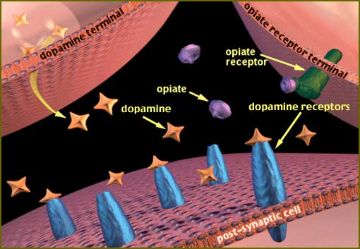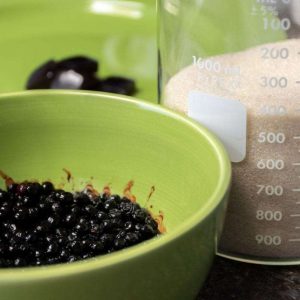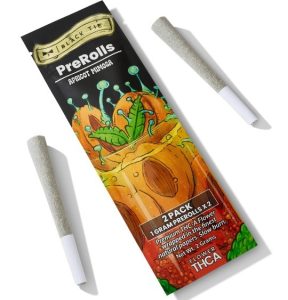Medical Marijuana

CBD VS THC
Medical marijuana: trials and studies on cannabinoids and the endocannabinoid system of the body
 Countless trials and clinical studies on the traits of medical marijuana have been carried out over the past four decades, studying the effects of the various active substances (cannabinoids=THC, CBD, CBN) of Cannabis on the endocannabinoid system of the body. Medical Journal Articles on Marijuana have extensively been published on this subject. This system is composed of :
Countless trials and clinical studies on the traits of medical marijuana have been carried out over the past four decades, studying the effects of the various active substances (cannabinoids=THC, CBD, CBN) of Cannabis on the endocannabinoid system of the body. Medical Journal Articles on Marijuana have extensively been published on this subject. This system is composed of :
- endocannabinoids produced by the body itself and
- cannabinoid receptors type I and II.
Researchers have so far only discovered these two receptors within the body, but they believe there are more of these receptors to be found within the body. Let’s elaborate more on how cannabinoids, such as THC and CBD, effect the endocannabinoid system.
Medical marijuana: the function of the cannabinoid receptors within the endocannabinoid system
 Cannabinoid receptor are cell membrane receptors, so they are located on the outer layer of a cell. They are generally activated by endocannabinoids or plant cannabinoids found in medical marijuana, such as THC and CBD. Endocannabinoids or cannabinoids will stick or “bind” to the cannabinoid receptor on the cell membrane for a while, causing activation of the receptor. This activitation will either stimulate or dim down the impulses to the system by these receptors. The next paragraph will contain an example to clarify.
Cannabinoid receptor are cell membrane receptors, so they are located on the outer layer of a cell. They are generally activated by endocannabinoids or plant cannabinoids found in medical marijuana, such as THC and CBD. Endocannabinoids or cannabinoids will stick or “bind” to the cannabinoid receptor on the cell membrane for a while, causing activation of the receptor. This activitation will either stimulate or dim down the impulses to the system by these receptors. The next paragraph will contain an example to clarify.
Medical marijuana: Cannabinoid Receptors Type I and II
 Cannabinoid receptors Type I are primarily found in the brain, mainly within the central nervous system. More precisely they are found within the basal ganglia and limbic system. Research has demonstrated that these receptors activated by cannabinoids result in a euphoric and anti-convulsive effect, which is relayed to the nervous system. They are not found in the part of the brain stem where respiration and cardiovascular activities are regulated, so there’s no risk with cannabis messing up these processes. Cannabinoid receptors Type II in cooperation with cannabinoids have been found out to be responsible, amongst other things, for the anti-inflammatory reaction of your body. They are primarily found in the immune system. Example: MS is a nervous system disorder where immune cells attack the nervous system, resulting amongst other things in spasms. Cannabinoids will activate the cannabinoid receptors (in this case receptors type II) resulting in the ‘dimming down’of its impulses sent to the central nervous system, leading in this case to an anti-inflammatory response. This anti-inflammatory response results in the spasms becoming less intense and less frequent.
Cannabinoid receptors Type I are primarily found in the brain, mainly within the central nervous system. More precisely they are found within the basal ganglia and limbic system. Research has demonstrated that these receptors activated by cannabinoids result in a euphoric and anti-convulsive effect, which is relayed to the nervous system. They are not found in the part of the brain stem where respiration and cardiovascular activities are regulated, so there’s no risk with cannabis messing up these processes. Cannabinoid receptors Type II in cooperation with cannabinoids have been found out to be responsible, amongst other things, for the anti-inflammatory reaction of your body. They are primarily found in the immune system. Example: MS is a nervous system disorder where immune cells attack the nervous system, resulting amongst other things in spasms. Cannabinoids will activate the cannabinoid receptors (in this case receptors type II) resulting in the ‘dimming down’of its impulses sent to the central nervous system, leading in this case to an anti-inflammatory response. This anti-inflammatory response results in the spasms becoming less intense and less frequent.
Medical marijuana: synergistic effect of THC and the cannabinoid receptors
Most of the research on medical marijuana that is carried out has focused on the influence of THC on the cannabinoid receptors of the endocannabinoid system. In recent years other research has uncovered that this endocannabinoid system is involved in physiological processes within the body. Processes, such as; the threshold of pain, sensation of hunger, blood pressure and movement. THC activates the cannabinoid receptors. In what way THC activates and work synergistically with these two receptors has been welldocumented in countless trials and studies. For instance, THC and the CB1 receptors combined create an anti-convulsive reaction. THC will aide the CB2 receptors to create an anti-inflammatory response.
Here’s an overview of the main medicinal properties of THC; analgesic (pain relief), anti-spasmodic, anti-tremor, anti-inflammatory, appetite stimulant and anti-emetic (anti-nausea).
Medical marijuana: Pharmaceuticals launch patented THC based medicine
All this research has led to pharmaceutical companies filing patents and creating THC based medication, such as Sativex. Medication that helps ease neuropathic pain and diminish spasticity with patients suffering from MS. This medicine like Marinol is based on Dronabinol, synthetic THC (delta-9-THC). Marinol has been successfully introduced as an anti-emetic and appetite stimulant and with PTSS, glaucoma and spinal cord injuries. Big downside of the medication that it is solely based on THC and lacks CBD to counteract any possible negative psycho-active effects. Patients often describe feeling “ high”, confused, dizzy, suffering from mood swings, irritability and even suffering from depression. All adverse effects caused by the absence of CBD.
Medical marijuana: change in focus to CBD in research since the 90’s
Since the 90’s research on medical marijuana and another active component cannabidiol (CBD) has proved it, too, holds great medicinal properties. Research has revealed that the two main active components of medical marijuana THC and CBD work synergistically in stimulating or slowing down the endocannabinoid system of the body. Today, more and more clinical trials and studies are being published on CBD alone, but also on synergistic effects between CBD and THC. Research and studies have only scratched the surface when it comes to the knowledge and understanding on how these components work, interact and what they can be used for medicinally. As you can understand these are exciting times for breeders and scientist alike.  Main effects of CBD; anti-inflammatory, anticonvulsant (against cramp and spasms), anti-psychotic, an anxiolytic (also anti panic or anti-anxiety agent) anti-oxidant, anti-rheumatoid arthritic, neuroprotective (limit neurological damage after an insult, seizure or stroke) and immunomodulatory (supression of immune responses and prevention of autoimmunity where your immune system attacks its own cells).
Main effects of CBD; anti-inflammatory, anticonvulsant (against cramp and spasms), anti-psychotic, an anxiolytic (also anti panic or anti-anxiety agent) anti-oxidant, anti-rheumatoid arthritic, neuroprotective (limit neurological damage after an insult, seizure or stroke) and immunomodulatory (supression of immune responses and prevention of autoimmunity where your immune system attacks its own cells).
Medical marijuana: change in breeding towards more CBD-rich strains
Strain breeding had, for many decades, been geared towards breeding for recreational use. CBD was nearly bred out of all strains as everyone was looking for THC-rich strains, creating that desired buzz. The breeders views has changed in recent years with all that we have come to know regarding the medicinal properties of THC, CBD and the complex synergy between cannabinoids. Moreover, thanks to medical marijuana scientists, activists and the legalization of medical marijuana in several states in the USA we have seen a surge in demand for CBD-rich strains. This change in demand has led to the creation of more and more CBD-rich medical marijuana strains that posses great medicinal value. One major obstacle in creating strains with a desired 1:1 ratio (CBD and THC level on percentage) or strains with high percentages in both THC and CBD is that there seems to be an inverse relationship between CBD and THC. Meaning a THC-rich strain normally has a low CBD percentage and vice versa. To breed strains rich in both THC and CBD, let alone the ideal 1:1 ratio, takes a lot of time, expertise and patience.
CBD patent by US government
The US Department of Health even holds a patent that describes the usefulness of cannabinoids in treating numerous oxidation-associated diseases, including inflammatory and autoimmune diseases. Cannabinoids can act as neuroprotectant, which could limit damage after a stroke, head injury. Or limit the degeneration associated with Alzheimer’s, Parkinson’s Disease or dementia. This patent acknowledges that CBD (Cannabidiol) is a powerful anti-oxidant and neuroprotectant with anti-inflammatory effects.
Medical marijuana as a medicine
Let’s have a more in-depth look how you can benefit from using medical marijuana the beneficial effects on numerous illnesses and ailments of both THC and CBD.
 THC and its medicinal properties
THC and its medicinal properties
THC, medical marijuana’s most and longest researched active substance, is useful to treat refractory (difficult to control) side effects from medicine use or chemotherapy. Her proven anti-emetic properties help control refractory effects, such as nausea and vomiting, associated with cancer chemotherapy and HIV medication. THC stimulates the appetite with both cancer patients undergoing chemotherapy as well as HIV patients suffering from the wasting syndrome. It helps them eat in the process stopping further weight loss or even help them gain weight. Wasting syndrome is where you, at least, lose 10{2b4a1a3f3bbc9c5a43771f34362679a3afcf9df24c0d9f4fe2fa80a69d802033} or more of your body weight. This can be due to side effects of medication (loss of appetite, nausea, diarrhea), mal absorption of nutrients and/or changes in metabolism. THC also helps stimulate appetite and with anorexia patients, Alzheimer’s disease patients. Studies have also shown that THC proved highly beneficial in greatly decreasing the disturbed behaviour among Alzheimer’s patients. Studies have shown that THC helps dim tremors and ataxia with MS patients. Some trials have shown quite incredible improvement with Tourette’s Syndrome with some patients even gaining complete control over their motor and vocal tics. THC also helps reduce intraocular pressure on the eyeball common with glaucoma. THC has shown, during numerous trials, its anti-convulsant activity with epilepsy and MS patients. It also helps alleviate pain (analgesic) and dims down muscle spasms for paraplegics and quadriplegics. Nabilone, a synthetic THC, medicine proved it reduces dyskinesia induced by levodopa (parkinson’s disease medication) with patients suffering from the disease.
CBD and its medicinal properties
CBD-rich medical marijuana strains are great as a painkiller thanks to its anti-inflammatory properties. They also help relieve spasms and can help as an anti-psychotic for schizofrenia and act as an anti-anxiety agent. CBD also helps with seizures, making them occur less often en less vigorously. CBD’s neuroprotective properties positively limits the damage after brain injury. She limits degeneration with chronic neurodegenerative diseases, such as (Parkinson’s, Alzheimer’s and Huntington’s. There is a broad interest in how apoptosis and neuroprotection affect the brain during development and after the onset of central nervous system (CNS) diseases, such as a stroke, schizophrenia and Parkinson’s. Lots of successful trials and studies have been carried out since the 90’s to fathom the medicinal potential of CBD, a medical marijuana active component. Trials on immunomodulatory actions of CBD are being carried out as we speak. Immunomodulatory means the prevention of allergic responses to environmental allergens. Studies on CBD and its immune responses to tumours and the development of memory responses to chronic infections have been promising. CBD has shown to be beneficial for numerous cutaneous disorders, including; atopic dermatitis, psoriasis and allergic contact dermatitis (ACD).
The synergistic effects of CBD and THC
Many stories regarding high levels of THC have dominated the media and politics in Holland with concerns over its potential negative psychological side effects on the patient/ consumer. This has led to a call in parliament for not allowing cannabis in coffeeshops and dispensaries to contain more than 15{2b4a1a3f3bbc9c5a43771f34362679a3afcf9df24c0d9f4fe2fa80a69d802033} THC. This whole public outcry is based ignorance and malinformation on the part of both the public and the legislators. There is a much better way to counteract such negative psychological (psychotic) side effects and that is by breeding strains that contain sufficient levels of CBD. As I mentioned earlier CBD has been almost bred out of most strains, so we need to focus on bringing back CBD into strains by breeding balanced (good THC/CBD ratio) medical marijuana strains. So we can optimize the full potential of medical marijuana and counteract any negative psychological side effects. A strain we especially developed for pain management is our Medical Kush. A CBD rich strain with an excellent CBD to THC ratio that works miracles for pain. She has a longlasting pain relieving effect. Another strain developed for medicinal use is our Blue Medi Kush. She works great for a number of ailments; anxiety, stress, depression, mild pain and to stimulate appetite. Both strains were specifically bred to have the right CBD to THC ratio, so neither will give you a racy feeling nor induce paranoia.
Medical marijuana; succesfull trials and studies on synergy between CBD and THC
Here are just a few examples of succes in certain research fields, underlining the synergistic therapeutic effects of THC and CBD in medical marijuana. Research has only just begun uncovering the synergistic (therapeutic) effects between cannabidiol (CBD) and THC. There is common belief among scientists, researchers, activists and doctors that we are merely scratching the surface on what medical marijuana can be used for. Some studies have even shown the anti-tumoral effects of the cannabinoid (immunomodulatory effect), killing of tumorcells. We have to admit that some studies in certain fields have been inconclusive, even contradictory, or did not yield any significant results. Nevertheless a great number of studies and clinical trials did uncover a vast array of therapeutic effects medical cannabis and its cannabinoids. With the right ratio of CBD and THC medical marijuana can be widely used for anything from the treatment of pain,PTSD, anxiety and OCD to dependancy and withdrawal symptoms, epilepsy and even to combat bacterial and fungal infections. More specifically here are a few more precise examples of various researches yielding results. Patients suffering from neuropathic pain in the brachial plexus showed significant improvement when being administred with THC and CBD. The combination of THC and CBD also showed a great improvement with sleeping disorders. Clinical research carried out in both the UK and Switzerland demonstrated that THC and CBD combined were able to reduce urethral pain and hyperactivity of the bladder with patients suffering from MS and spinal cord injury. In Israel, patients with severe head injury were given dexanabinol in the OR and that made both the pressure in the head significantly lower and the duration when pressure reached above 25mmHg shorter.
More studies and trials are needed
More studies need to be carried out uncover all therapeutic benefits that medical marijuana holds. Focal point in these studies is to fully understand the synergy between THC and CBD. This sacred plant, which was already mentioned in Chinese medicine books of over 4000 years old, has proven its merits in dimishing, dimming and even resolving a great number of ailments, pains, inflammations, infections and diseases. Ultimate proof that CBD possesses medicinal powers is the fact that the US US government holds a patent on CBD and its therapeutic benefits. Another stark piece of evidence speaking in favor of medical marijuana is there is a (growing) number of (patented!) THC based medicine available on the market today. This adds even more credibility to the claim that Cannabis is possesses medicinal properties. Then we have the countless, successful trials and studies that have yielded irrefutable evidence that a vast array of medicinal properties and therapeutic benefits can be found medical marijuana, her cannabinoids and the synergistic effect of the cannabinoids CBD and THC. And last but not least, there have been some very promising results and exciting findings in studies and clinical studies that are currently conducted or have been concluded in uncovering the full medicinal potential of medical cannabis. All of this just underlines the necessity to do more research on medical marijuana and its cannabinoids THC and CBD ( both separate and synergistically).
Medical marijuana: experienced medicinal benefits vary per individual
Very important to mention is that while a specific strain of medical marijuana might work for one patient it might not for another patient. Experienced benefits stemming from a specific strain of medical cannabis vary between patients. An example; there was one caregiver in California that said she benefited more from THC than CBD when it came to dimming her pain. Whilst another patient suffering from pains as a result of her epilepsy did benefit from using CBD rich (often more Indica dominant) strains. What we are trying to say her is that it is not as simple as saying; ‘Oh, this is a sativa dominant medical marijuana strain, which is rich in THC, so this will help fight my nausea’. It is just not that simple! Each strain should therefore be analyzed using HPLC machine, to establish what cannabinoids are present in a particular strain. This machine also produces qualitative percentages of each cannabinoid. With these data you can then look at the correlation between cannabinoids, by which you can determine what therapeutic value this particular sample of medical marijuana possesses and establish what this strain could be used for medicinally. The last stage is and always will be, of course, the patient. He or she will decide what does work and what not.
 Additional complication is variation between phenos
Additional complication is variation between phenos
A complicating factor is always the difference in plantmaterial used to extract your medicine from. A Sativa dominant pheno within a particular medical marijuana strain might have a higher THC level, but a low CBD level. Whilst an Indica dominant pheno (often matures more rapidly) of that same medical marijuana strain is exactly the opposite, so high on CBD and lower on THC. Then it just depends, which pheno of that medical marijuana strain was used and analysed with HPLC or GC/MS ((Gas Chromatography/ Mass Spectometry). This particular pheno will differ in the composition of its cannabinoids from it’s unalike (plant)sister, resulting in a different medication. Therefore to be useful as medical marijuana a strain must be composed of identical plant, so it has to be very stable in phenos. In order to get the desired therapeutic effect again and again, that is. To achieve that you will have to start an intensive breeding program of meticulous selection of the right phenos, crossing these phenos and backcrossing these selected phenos over several generations to stabilize that strain with a steady percentage of THC and CBD.
Measuring THC, CBD and other cannabinoids
Through chromatography (High Power Liquid Chromatography or Gas Chromatography Mass Spectrometry) you can analyze the active chemicals within each medical marijuana plant. This produces results in potency levels and chemical ratios. Heating the product, which some GC’s do, alters the plant’s natural chemistry, destroying THC acids and other components with proven therapeutic value that also require analysis. The best available analysis currently available is being carried out with a HPLC (high performance liquid chromatography) that actually tests 7 cannabinoids. An average GC/MS only tests for three cannabinoids.
Breed stabile genetics with little to no variation between phenos
In short to make an exact medicine that works you need to work with stable genetics with little to no variation between phenos. It requires an extensive breeding program with stabilization of the desired phenos over several generations to be able to grow medical marijuana plants that contain almost identical percentages of THC and CBD. Percentages you were looking for to achieve a specific therapeutic goal.
Research on the entire plant and all its cannabinoids
Any research should therefore, as mentioned before, be carried out on the whole plant and its synergistic effects (interacting cannabinoids). Simply because a medical marijuana plant is a macro organism, with hundreds of interrelated compounds bearing synergistic effects. By correlating exact chemical ratios, through gas chromatography analysis (HPLC or GC/MS), we find ourselves at the beginning stages of being able to give relevant medical information regarding specific strains.
Measuring THC, CBD and other cannabinoids
Through gas chromatography (GC/MS gas chromatography Mass Spectrometry) you can analyze the active chemicals contained within each medical marijuana plant. This produces results in potency levels and chemical ratios. Heating the product, which some GC’s do, alters the plant’s natural chemistry, destroying THC acids and other components with proven therapeutic value that also require analysis.
Medical marijuana: huge rise in development of CBD-rich strains
Owing to the acceptance of medical marijuana as a medicine and the legalization in various countries and US states we have seen a huge surge in the development of CBD-rich strains. Most notably in the USA. Numerous researches carried out since the 90’s have uncovered an impressive array of therapeutic benefits liased with CBD and its synergistic, medicinal effects combined with THC. Spliff Seeds has, therefore, spent several years developing two specific medical marijuana strains. We have the Medicinal Citral, which is high in CBD and THC, the perfect painkiller! And we have the Blue Medi Kush (a hybrid high on THC), which is very suitable as an anti-anxiety agent, against winter blues and dimishes nausea. Both strains are suitable as daytime medication. We are constantly experimenting by breeding with our medical marijuana strains to find improvements to make them better suitable for specific therapeutical purposes.
(c) Latest blog entries – Spliff and Marihuana Seeds – Read entire story here.





